Using a LABA7 shock dyno is simple. The process is designed to be clear, intuitive, and ergonomic – whether it’s your first test or your hundredth.
Let’s walk through what using the dyno actually looks like.
- Choose the Stroke
- Mount the Shock Absorber
- Connect and Launch Software
- Test Shock Absorber
- Read the Shock Absorber Graphs
- How to Compare Different Damper Settings?
- Conclusion
Choose the Stroke
First, determine the stroke you’ll need. On the cranks of LABA7 Scotch-Yoke shock dynos, we engraved the full travel length – that’s how far the shock will be compressed and extended during the test. Choosing the right stroke will prevent damaging it. On electromagnetic damper test systems this step is not mandatory as EMA can replicate any stroke.
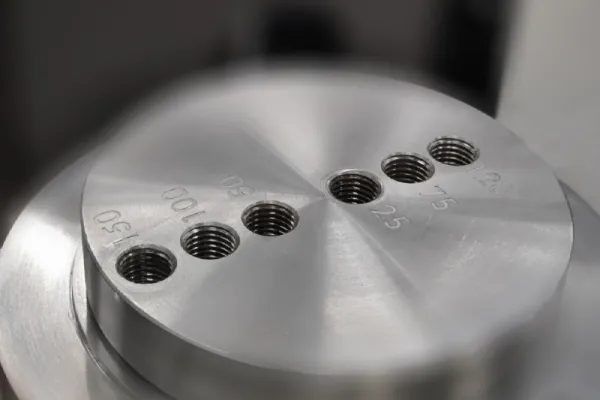
Mount the Shock Absorber
Next, mount the shock. Use the right shock dyno adapters for the damper. Tighten the top handles while the shock is nearly fully extended and the dyno is at the bottom dead center. Everything should feel stable and secure to safely test the shock absorber.

Connect and Launch Software
Power on the dyno. Connect it to your computer via Wi-Fi or USB.
Now launch the LABA7 Shock Dyno Software. Connect the dyno and start a new project. You can add details about the shock: year of manufacture, piston size, oil used, manufacturer, and any other notes.
Calibration comes next – and here’s the best part: it’s fully automated. One click on “Calibrate” and the dyno does the rest. No manual steps. No extra tools.
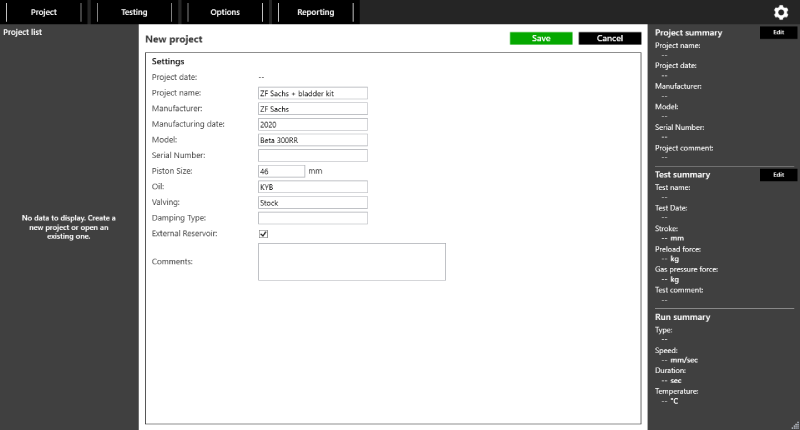
Test Shock Absorber
Now define the test. In this case, it’s a dirt bike shock. We’ll test it at three speeds: 200 mm/s, 500 mm/s, and 1000 mm/s. These represent low, mid, and high-speed compression. Just select the test profiles and press start. The dyno will run each one automatically.
Worried about safety? Don’t be. If the shock fails, the dyno stops the test immediately thanks to built-in safety protocols.
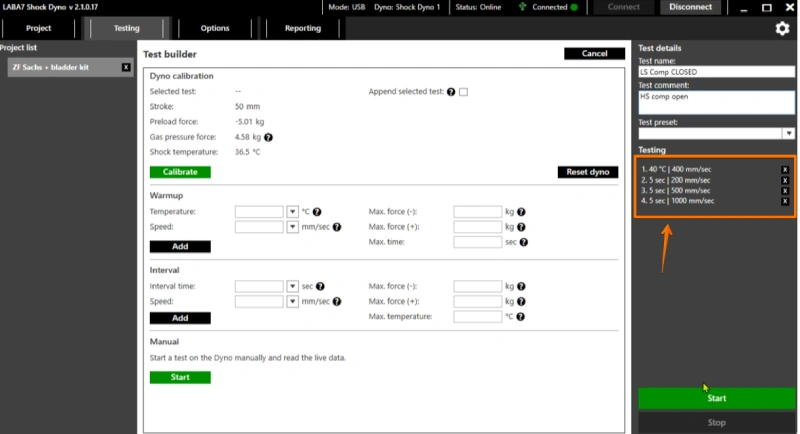
Read the Shock Absorber Graphs
Once the tests are done, the data is ready to view. The software presents it in clear, easy-to-understand graphs. “Force vs. Displacement” is the most common one – and a great place to start.
You can save the results to your computer. You can export them in multiple formats. For this example, a PDF (PVP) makes sharing easy.
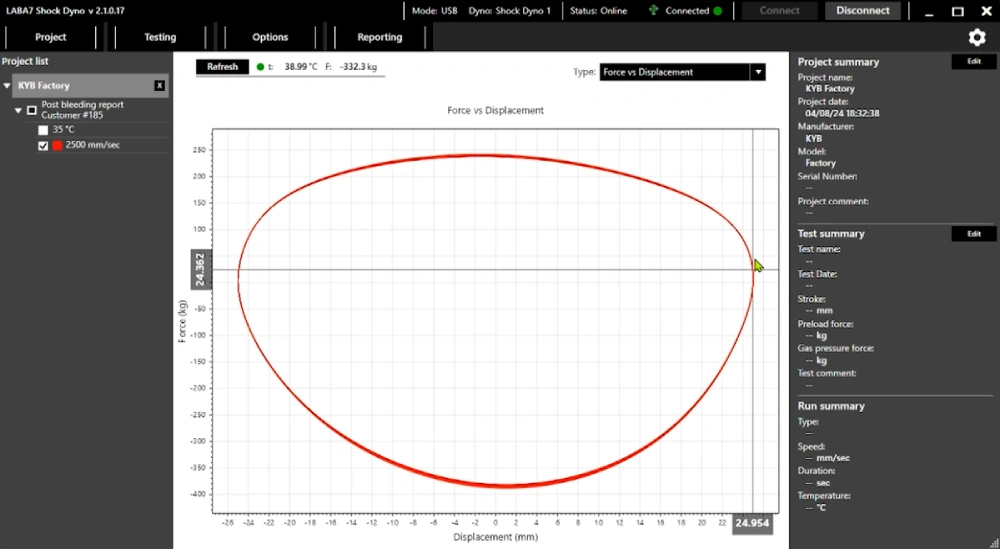
How to Compare Different Damper Settings?
Want to compare changes after an adjustment? Just make changes and test shock absorber again. Tick the boxes of the runs you want to compare. Color-coded lines make it simple to see the difference in damping force.
That’s it.
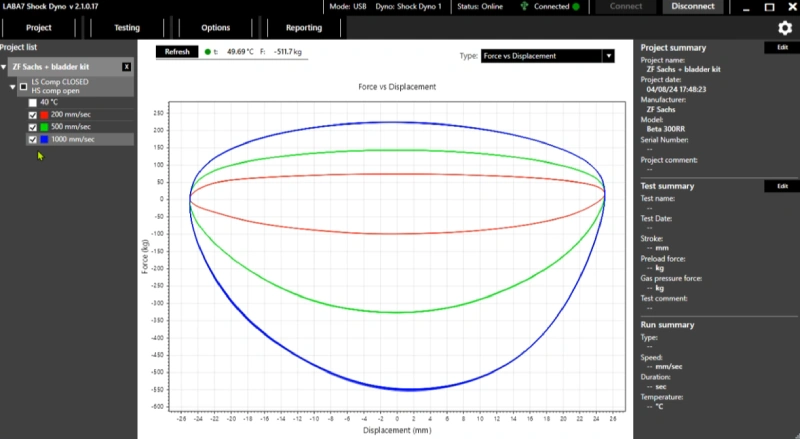
Conclusion
The whole process is fast, straightforward, and repeatable. No unnecessary steps. No confusion. LABA7 shock dynos are built to be easy to use, even for someone with no prior dyno experience.
It really is that simple!
You also might enjoy reading:
